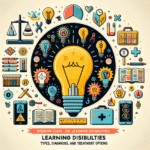
Inclusion in Action: Practical Tips for Developing an Inclusive Classroom Environment
Introduction
In a world where diversity and acceptance are increasingly vital, the educational realm must adapt. The movement towards inclusivity in classrooms is more than just a trend; it’s a commitment to ensuring every student feels valued, irrespective of their background, ability, or learning style. If you’re a teacher, administrator, or educator looking to foster an inclusive environment, you’re in the right place. Welcome to "Inclusion in Action: Practical Tips for Developing an Inclusive Classroom Environment." Here, we will explore actionable strategies that create engaging, supportive, and enriching learning experiences for all students.
Imagine walking into a classroom where every student’s voice is heard, where learning is tailored to individual needs, and every child feels a sense of belonging. This vision can become a reality, and through practical, evidence-based techniques, you can transform your teaching practices. Let’s embark on this journey to inclusivity together!
Understanding Inclusion
What is an Inclusive Classroom?
Before diving into practical tips, it’s essential to comprehend what an inclusive classroom truly means. An inclusive classroom accommodates all students, including those with disabilities, different cultural backgrounds, and various learning preferences. It’s a place where differentiation is employed, and every student’s unique needs are acknowledged.
The Importance of Inclusion
The significance of inclusion in education cannot be overstated. Research shows that inclusive classrooms enhance social interaction, foster empathy among students, and promote better academic outcomes. By valuing diversity as a strength, teachers can create a rich learning environment that prepares students for a diverse world.
Practical Tips for Developing an Inclusive Classroom Environment
Now that we’ve established the importance of inclusion, let’s explore practical tips that can guide educators in creating an inclusive environment. These actionable strategies—discussed through real-world case studies—will show you how to implement these ideas effectively.
1. Create an Inclusive Curriculum
Tailoring Curriculum Design
The first step in inclusion in action is adapting the curriculum. A flexible and responsive curriculum allows for adjustments based on the varying needs of students. Not all learners absorb information the same way. Incorporating various teaching methods—visual, auditory, and kinesthetic—helps cater to diverse learning styles.
Case Study: Oakridge High School
At Oakridge High School, educators adopted a Universal Design for Learning (UDL) framework. By integrating multimedia presentations, hands-on activities, and group work, the school saw a significant increase in student engagement. This approach demonstrates how varying instructional strategies can lead to profound improvements in student performance.
2. Foster a Sense of Community
Building Relationships
An inclusive classroom must cultivate a supportive community. Building relationships among students fosters trust and peer support. Incorporate team-building activities that encourage collaboration and make students feel part of a community.
Case Study: Maplewood Middle School
Maplewood Middle School experienced a transformational year when they implemented a weekly “Circle Time.” During this time, students shared their thoughts and feelings, enhancing camaraderie. The result? A measurable decrease in bullying incidents and an increase in student participation across the board.
3. Utilize Assistive Technology
Empowering Students
Technology is a powerful tool in promoting inclusion. Employing assistive technologies—like text-to-speech software, adaptive devices, and online learning platforms—empowers students with disabilities to participate fully in classroom activities.
Case Study: River Valley School District
When River Valley School District invested in assistive technologies, they noted a remarkable boost in student independence. Tools like speech recognition software allowed students with physical disabilities to contribute to class discussions. This case reinforces the potential of technology as a game-changer in education.
4. Encourage Student Voice
Valuing Opinions
Creating an inclusive environment means valuing every student’s voice. Encouraging students to share their opinions and experiences can help validate their feelings and promote inclusivity.
Case Study: Pinecrest Academy
At Pinecrest Academy, the “Student Voice Forum” was established, allowing students to address issues openly. This initiative not only empowered students but also provided teachers with valuable feedback on how to improve classroom dynamics.
5. Focus on Social-Emotional Learning (SEL)
Supporting Well-being
Incorporating social-emotional learning supports students’ emotional health. By teaching skills like empathy, resilience, and conflict resolution, educators can prepare students for both academic challenges and life experiences.
Case Study: Clearview High School
Clearview High School implemented an SEL curriculum that significantly reduced student anxiety levels and fostered a compassionate environment. With regular SEL lessons, students learned to support each other’s emotional needs, greatly enhancing the sense of community.
6. Adapt Assessment Methods
Evaluating with Fairness
Standardized testing can disadvantage some students. Adoption of varied assessment methods allows for more equitable evaluation of student performance.
Case Study: Westfield Secondary School
Westfield Secondary School decided to implement multiple forms of assessment, including project-based assessments and oral presentations, leading to a noticeable improvement in student confidence and academic performance. Students reported feeling more capable when given options that matched their strengths.
7. Professional Development and Training
Lifelong Learning for Educators
Ensuring teachers are well-trained in diversity and inclusivity is pivotal. Continuous professional development opportunities help educators stay informed about best practices in inclusive education.
Case Study: Greenstone Teachers’ Collaborative
The Greenstone Teachers’ Collaborative initiated an intensive training program focused on inclusive education strategies. Teachers who participated reported higher confidence levels and collectively fostered a more inclusive environment in their classrooms.
8. Involve Families and Communities
Strong Support Systems
Building partnerships with families fosters an inclusive environment. Keep communication open and collaborate with parents to understand their child’s needs better.
Case Study: Harmony Academy
At Harmony Academy, regular “Family Engagement Nights” were organized to share resources and strategies with families. These events led to improved relationships between the school and families, ensuring a supportive network for every child.
9. Conduct Regular Assessments of Inclusivity Practices
Reflecting for Improvement
Regular evaluation of inclusivity practices is crucial. Solicit feedback from students and parents to identify areas for improvement.
Case Study: Summit Learning Center
Summit Learning Center initiated annual inclusivity assessments using student feedback and peer evaluations. These reflections helped build a culture of continuous improvement, providing actionable insights that directly benefitted classroom dynamics.
10. Lead by Example
Creating a Role Model Environment
Last but certainly not least, being a model of inclusive behavior is essential. Displaying kindness, understanding, and respect sets the tone for the entire classroom.
Case Study: Bright Futures Academy
At Bright Futures Academy, teachers consciously engaged in inclusive language and behaviors. This overall approach inspired students to practice the same values, creating a truly inclusive environment.
Conclusion
Creating an inclusive classroom is not merely an instructional strategy; it’s a moral imperative. It fosters an environment where diversity is embraced, and every learner has the opportunity to thrive. The strategies we’ve explored in this article—Inclusion in Action: Practical Tips for Developing an Inclusive Classroom Environment—demonstrate that inclusive education is attainable through thoughtful planning and a commitment to understanding individual needs.
As educators, let us strive to build classrooms where every child feels welcomed, appreciated, and empowered. Begin implementing these strategies today—the impact can be profound and life-changing for your students.
FAQs
1. What is the main goal of inclusive education?
The primary goal of inclusive education is to ensure that all students, regardless of their abilities or backgrounds, have equal access to learning opportunities and are fully integrated into the classroom community.
2. How can teachers adapt their teaching styles for inclusivity?
Teachers can adapt by employing differentiated instruction, using varied teaching methods, and providing multiple means of engagement to cater to diverse learning styles.
3. What role does technology play in creating an inclusive classroom?
Technology provides tools that enable personalized learning experiences, support students with disabilities, and enhance engagement for all learners.
4. How important is parental involvement in inclusive education?
Parental involvement is crucial as it fosters a support system for students at home and reinforces the inclusive practices being implemented in the classroom.
5. What are some signs that an inclusive classroom is effective?
Signs of an effective inclusive classroom include increased student engagement, collaboration among students, reduced behavioral issues, and positive feedback from students and parents.
6. How can I continue developing my skills as an inclusive educator?
Continued professional development, attending workshops, engaging in collaborative networks, and seeking mentorship opportunities are great ways to enhance your skills in inclusive education.
In closing, remember that inclusion is not a destination but a journey—a journey worth taking for the betterment of our students and the future of education.









